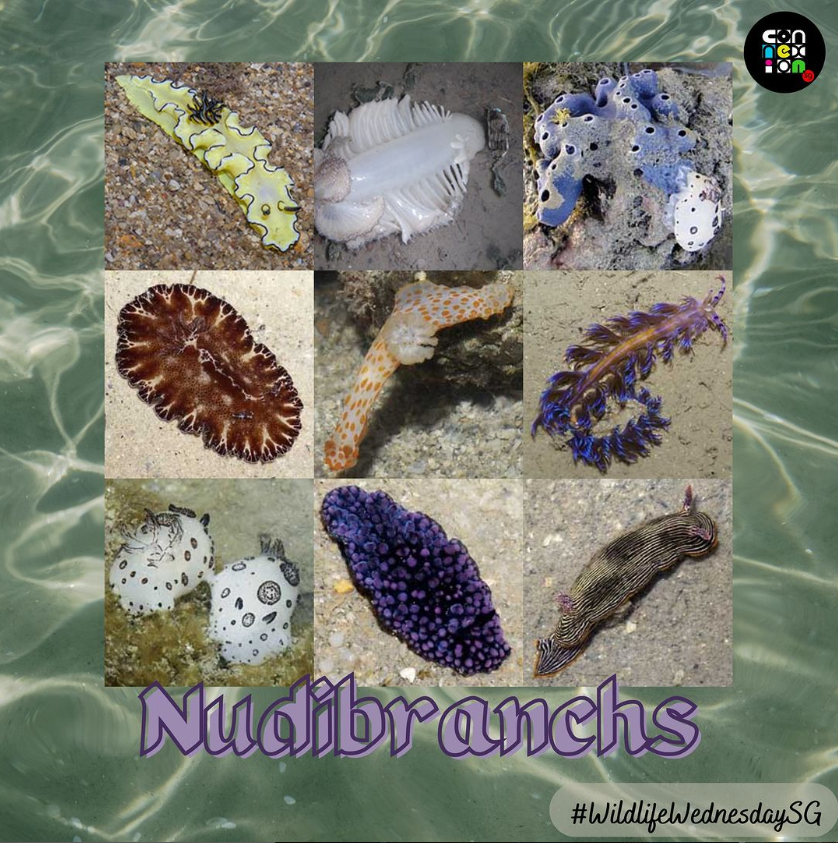Nudibranchs (Sea Slugs)

Nudibranchs (pronunciation: ‘NEW-dih-bronk’), or sea slugs, are a group of shell-less marine gastropod molluscs. Their name means ‘naked gill’, referring to the breathing apparatus outside their soft bodies.
Nudibranchs may be encountered on our shores. They are likely found near reefs, on coral rubble and rocky shores with sponges and other encrusting animals. Being small and flat, they can easily hide in narrow places.
To protect themselves, some Nudibranchs produce distasteful substances, toxins and acids. They advertise this with bright warning colours, with hues from bright purples and blues to fluorescent oranges. Others are camouflaged to match their surroundings.
Some Nudibranchs breathe with a flower-like feathery gill on their backs. Others have their gills hidden between the body mantle and the foot. Many Nudibranchs have two pairs of tentacles. One pair, the oral tentacles, is near the mouth and senses things by touch. The second pair, rhinophores, is above the head, and detects chemicals in the hunt for prey and mates.
Most Nudibranchs are carnivores. Being small and slow, they feed on immobile creatures like barnacles, sponges, ascidians, corals, sea anemones, and other Nudibranchs’ eggs.
Many Nudibranchs have a rough tongue called a radula. Different species have specially adapted ‘teeth’ on the radula. Those that eat sponges have many scythe-like teeth while others lack a radula and secrete digestive juices to digest their prey. Those that feed on corals have well-developed jaws to hold onto their prey while others have a pair of large teeth to cut open their prey.
Nudibranchs are hermaphrodites and practise internal fertilisation. Each Nudibranch has a complex system of tubes to avoid self-fertilisation, to introduce sperm and simultaneously receive sperm from a partner, and for laying eggs.
Changi beach is one of the best places to spot Nudibranchs. When looking for them during low tide, look for the pools of water left behind. You’re likely to see them on seaweed, hydroids, or under rock surfaces. While Nudibranchs are generally not dangerous to humans, avoid touching them as it can harm their sensitive skin and cause them stress.

